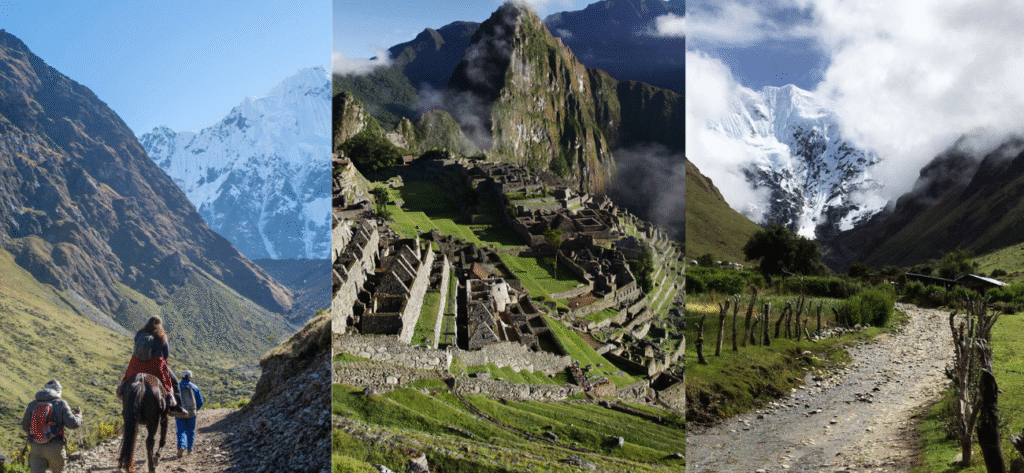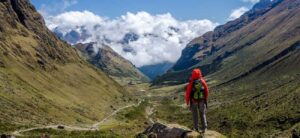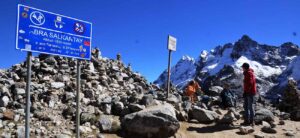What Is the Salkantay Trek?
Before doing it myself, I kept hearing about the Salkantay Trek as an «alternative route» to Machu Picchu — but after living it, I can honestly say it’s much more than just an alternative. It’s a once-in-a-lifetime adventure that combines incredible landscapes, physical challenge, and a deep connection to nature.
My First Impressions
I chose the Salkantay Trek because I wanted a route that felt wild and less crowded than the classic Inca Trail. From the very first day, I realized I had made the right choice.
We started early in the morning, and almost immediately, the scenery was breathtaking — towering mountains, rivers, and a feeling of vast open space that made me feel small but completely alive.
What Makes the Salkantay Trek Special?
- The Variety of Landscapes:
One of the most amazing parts of this trek is how the environment changes. I hiked through snowy mountain passes, lush cloud forests, and tropical valleys — all in just a few days. One morning I was bundled up in my warmest jacket under the shadow of Salkantay Mountain, and by the afternoon, I was walking through humid jungle paths surrounded by green everywhere. - The Challenge:
The Salkantay Trek isn’t easy, but that’s what makes it so rewarding. The most difficult part for me was the Salkantay Pass (4,600 meters / 15,092 feet). It’s a long, steep climb, and the altitude really hits you. But reaching the top, standing under the majestic snow-capped peak, was one of the proudest moments of my life. - The Sense of Adventure:
Unlike more structured treks, the Salkantay feels raw and authentic. There were moments when we didn’t see anyone else for hours. It felt like truly being out in the wild, far from the usual tourist circuits. - The Connection to Machu Picchu:
After several days of hiking, reaching Machu Picchu felt incredibly emotional. Walking into the Lost City of the Incas after everything I had experienced — the cold, the heat, the altitude, the friendships formed along the way — made the visit to Machu Picchu so much more meaningful.
Things I Loved the Most
- Waking up to the view of Mount Salkantay covered in morning mist.
- The night skies full of stars, clearer than anything I had ever seen.
- The camaraderie with other trekkers — we started as strangers and finished as friends.
- The first glimpse of Machu Picchu from Llactapata — a magical, unforgettable moment.
My Advice If You’re Considering It
If you love nature, adventure, and pushing your limits, the Salkantay Trek is absolutely worth it. It’s challenging, yes — but also incredibly rewarding. Every step brings you closer not just to Machu Picchu, but to a deeper appreciation of the Andes and of yourself.
For me, it wasn’t just a trek. It was a journey — one that I’ll carry with me forever.
What you should do before booking Salkantay Trek to Machu Picchu
1. What is the Salkantay Trek, and how does it compare to the Inca Trail?
The Salkantay Trek is an alternative route to Machu Picchu, offering breathtaking landscapes, including snow-capped mountains, cloud forests, and high-altitude passes. Unlike the Inca Trail, the Salkantay Trek does not require a permit and is less crowded, providing a more adventurous experience.
2. How many days does the Salkantay Trek take to reach Machu Picchu?
The standard Salkantay Trek takes 5 days and 4 nights, covering approximately 72 km (45 miles). However, there are shorter and longer variations of the trek available.
3. What is the difficulty level of the Salkantay Trek?
The Salkantay Trek is considered moderate to challenging, as it involves hiking at high altitudes and steep ascents. The highest point is the Salkantay Pass at 4,650 m (15,255 ft). Proper acclimatization is recommended before starting the trek.
4. Do I need a permit to hike the Salkantay Trek?
No, unlike the Inca Trail, the Salkantay Trek does not require a special permit. However, you do need an entrance ticket for Machu Picchu, which should be booked in advance.
5. What is the best time of year to hike the Salkantay Trek?
The best time to hike the Salkantay Trek is during the dry season (April to October). The weather is more stable, with clear skies and less rain. The rainy season (November to March) can make the trail muddy and challenging.
6. What should I pack for the Salkantay Trek?
Essential items include:
- Hiking boots (waterproof and comfortable)
- Warm layers (temperatures drop at night)
- Rain jacket or poncho
- Sleeping bag (suitable for cold weather)
- Sun protection (hat, sunglasses, sunscreen)
- Water bottle and purification tablets
- Basic first aid kit
7. Is altitude sickness a concern on the Salkantay Trek?
Yes, altitude sickness can be an issue, especially at the Salkantay Pass (4,650 m). It is recommended to spend a few days in Cusco (3,400 m) before the trek to acclimatize. Staying hydrated, avoiding alcohol, and chewing coca leaves can help with symptoms.
8. How do I get to Machu Picchu from the end of the Salkantay Trek?
After reaching Hidroelectrica, you have two options:
- Hike 3 hours to Aguas Calientes.
- Take a 30-minute train from Hidroelectrica to Aguas Calientes.
From Aguas Calientes, you can hike or take a bus up to Machu Picchu.
9. Are there accommodation options along the Salkantay Trek?
Yes, most trekking companies provide campsites or eco-lodges along the route. Some upgraded tours offer more comfortable accommodations, such as glass cabins or domes. The final night is usually spent in a hotel in Aguas Calientes.
10. Can I visit Machu Picchu without hiking the Salkantay Trek?
Yes, you can take a train from Cusco to Aguas Calientes, followed by a short bus ride or hike up to Machu Picchu. This is the most popular option for visitors who prefer not to hike.
You must be interested
- Salkantay Trek to Machu Picchu
- Salkantay Trail 5 days 4 nights
- Salkantay Trek difficulty level
- Salkantay vs Inca Trail comparison
- Best time to hike Salkantay Peru
- Salkantay Trek tour price 2026
- Guided Salkantay Trek packages
- Salkantay Trek altitude and acclimatization
- Salkantay Trekking tours from Cusco
- Salkantay Trek full itinerary
Salkantay Travel Information
- Salkantay Trek Food: What You’ll Eat on the Trail
- Birds of the Salkantay Trek: Species You Can Spot on the Route
- Is the Salkantay Trek Dangerous?
- Salkantay Trek Altitude: Heights Along the Route
- Flora and Fauna in Salkantay Trek
- Altitude Sickness on the Salkantay Trek
- Salkantay Trek Difficulty: How Hard Is the Route?
- Salkantay Trek FAQs: Answers to Common Questions
- Best Time to do Salkantay trek
- Training for Salkantay Trek: How to Get Ready
- How long is the Salkantay Trek?
- Salkantay Trek Price: How Much Does It Cost?
- What Is the Salkantay Trek?
- What to Bring on the Salkantay Trek?
- Best Time to Do Salkantay Trek
- Your Insider’s Guide to Salkantay Trek
- Where is Salkantay?
- Salkantay highlights
- Tour Montaña de Colores con Transporte














